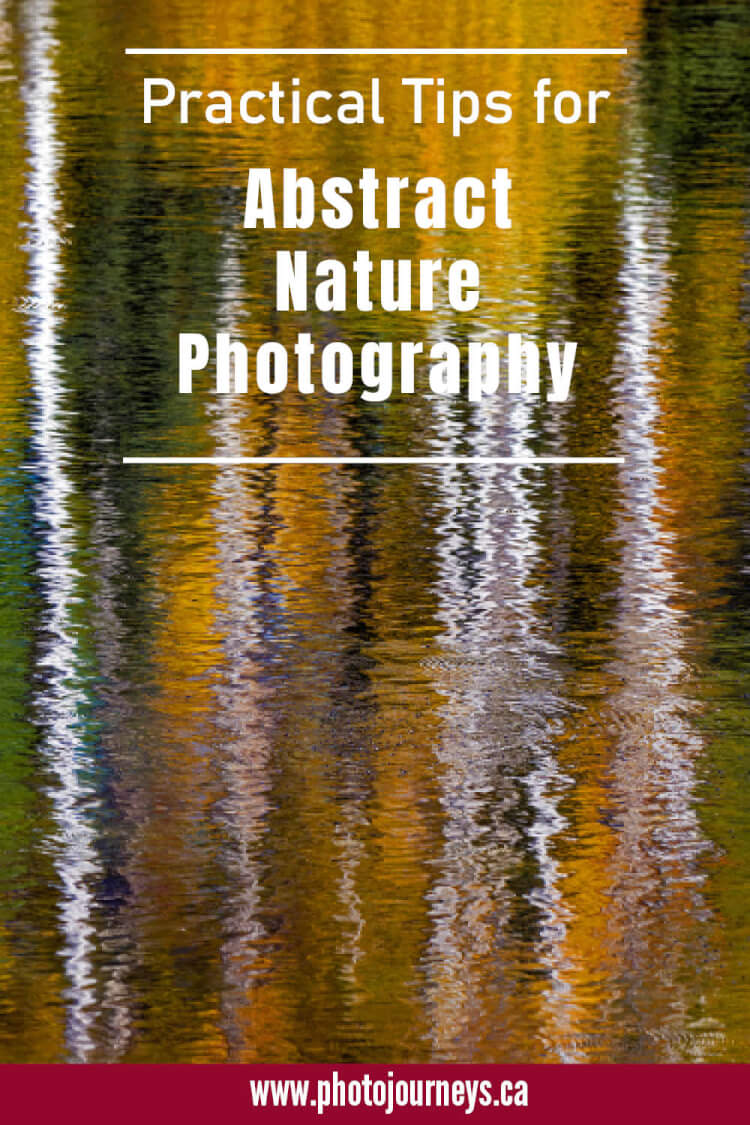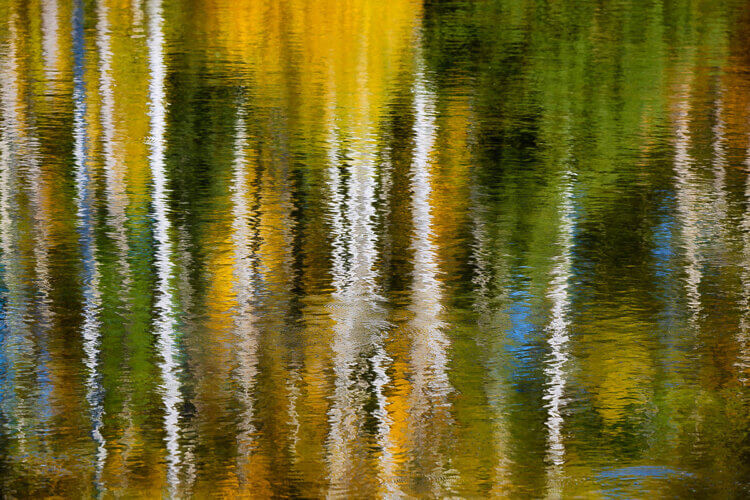
All photos © Robin and Arlene Karpan

Photographing abstracts offers us an alternative way of seeing and appreciating the natural world. When we photograph most scenes of nature we usually want to portray them in clear ways so the viewer knows what the subject is about. A tree looks like a tree, a rock looks like a rock, and so on. But it doesn’t always have to be that way. Sometimes an abstract interpretation can be an effective way of making a compelling image.
When a painter creates a piece of abstract art it may not have anything to do with reality. Abstract nature photography is a bit different in that we are still photographing the real world, but doing it in such a way that it may not at first be apparent what that reality is. A viewer might look it at and say, “That’s kinda cool, but what the heck is it?”
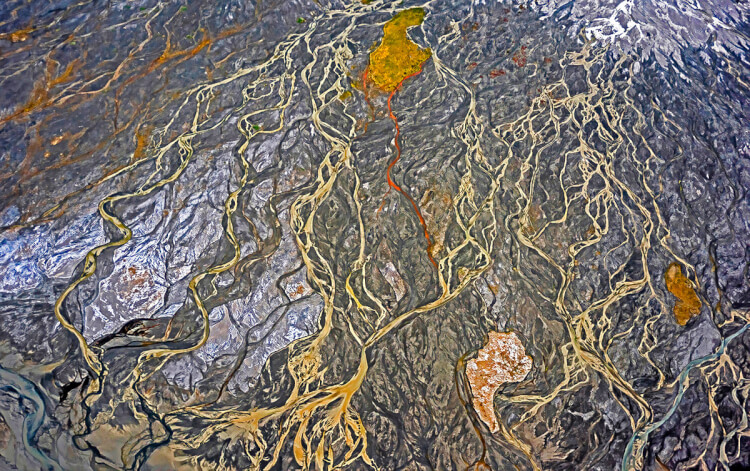
The main reason to do abstract photography is that it’s a lot of fun. It provides the freedom to interpret the scene in innovative ways. The conventional “rules” of photography are out the window. Indeed, abstract photography has no rule book. It’s less about showing a recognizable subject and more about the interplay of shapes, patterns, textures, colours, or light. Here are a few ways to begin.
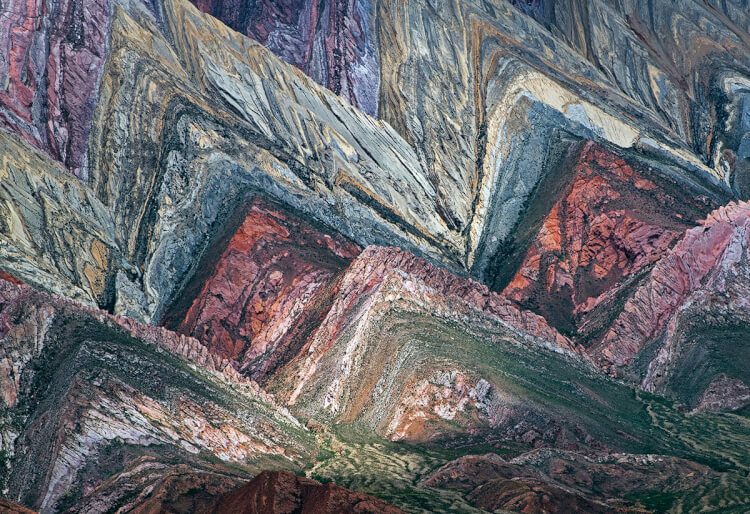
Get close – but also get far away
In many cases, getting close to a subject is a great way to find interesting patterns, whether it be water spray, the intricate feathers on a bird, frost patterns, or even the details on a single leaf. But don’t overlook isolating a small section of a scene from far away with a telephoto lens. A telephoto lens compresses the perspective, providing a very different look than when you are close.
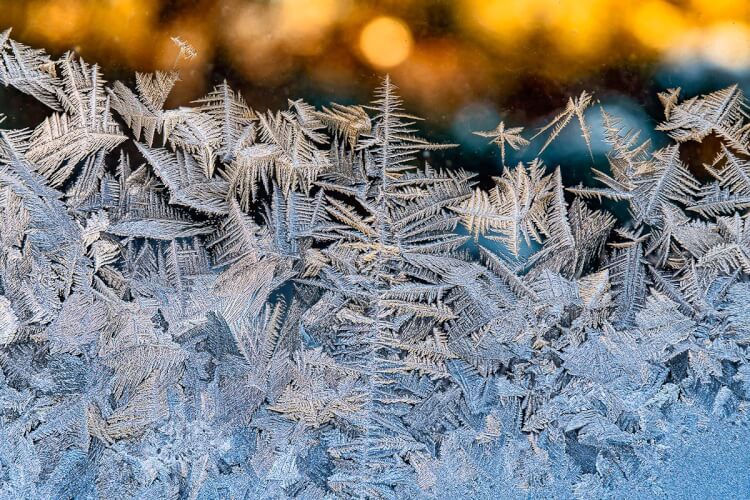
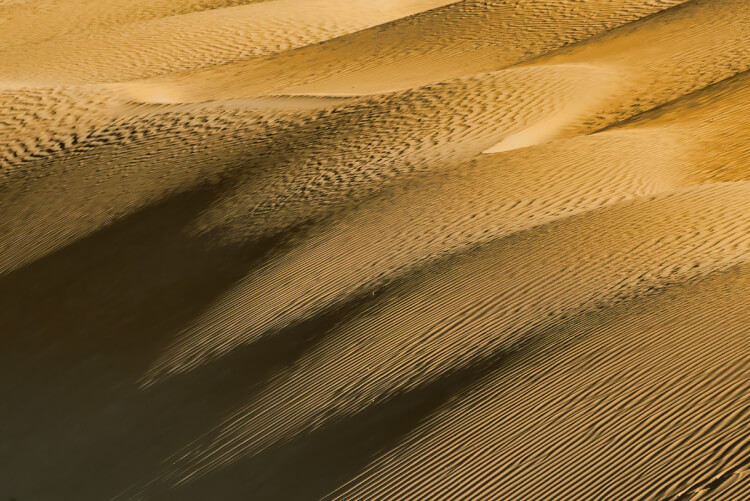
Disguise the scale and context
In most types of photography, we guide the viewer by making it clear what the photo is about. We might even include people in the landscape to give it a sense of scale. For an abstract impression, on the other hand, it might be more interesting to purposely disguise the context and scale.
In the following image, there is little to tell us at first glance what it is and how large a piece of the landscape we’re looking at. A hint is the spot of green in the upper centre which is a small island. This aerial shot shows a half-kilometre or so stretch of the William River in northern Saskatchewan where it flows through the Athabasca Sand Dunes and becomes inundated with sand. Except for the island, everything we’re looking at is below the surface of the water, with different shades showing different depths of sand on the river floor. By cropping out visual clues such as the riverbank, the image becomes more of an impression than a documentary photo.
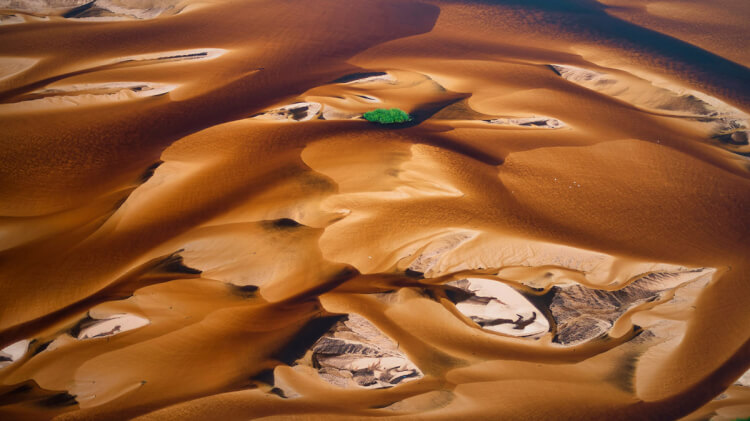
Watch for reflections on water
Water holds a treasure-trove of abstract possibilities. When we take photos of reflections in water, we usually look for calm conditions. But for abstracts, a bit of movement in the water can add to the impressionistic look of the image. That was the case in the opening photo where a light breeze caused slight ripples.
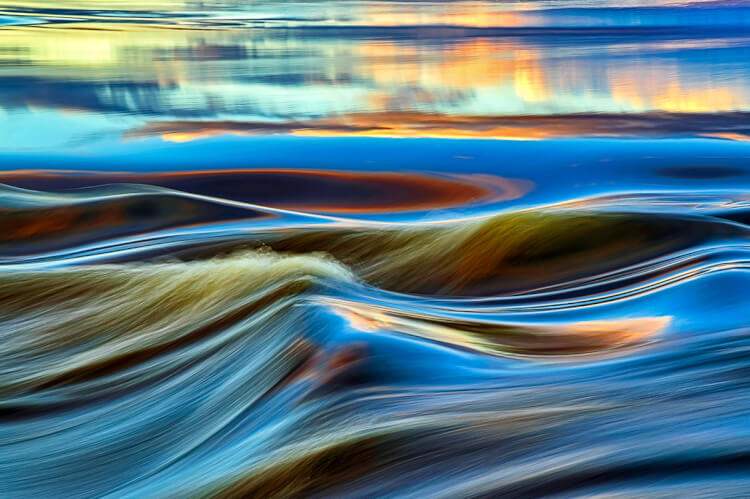
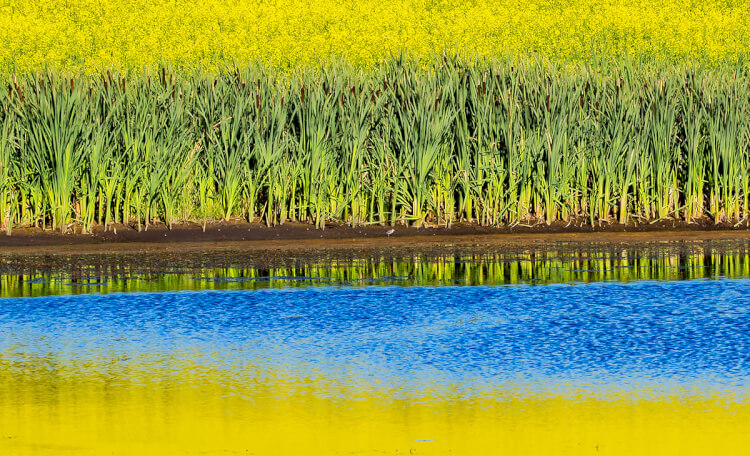
Emphasize minimalism in the abstract
Many abstracts tend to be minimalistic already in that they eliminate extraneous elements. But we can take things a step further by making the image even more basic and including only the simplest of elements.
The following image is about as minimal as it gets. It shows the top of a brilliant orange sand dune in Namibia against the blue sky. This is another case of not conforming to “rules” such as never placing the horizon line in the centre of the photo. In this case, two equal halves seemed to make sense since the two colours were equally strong and seemed to compete for attention.
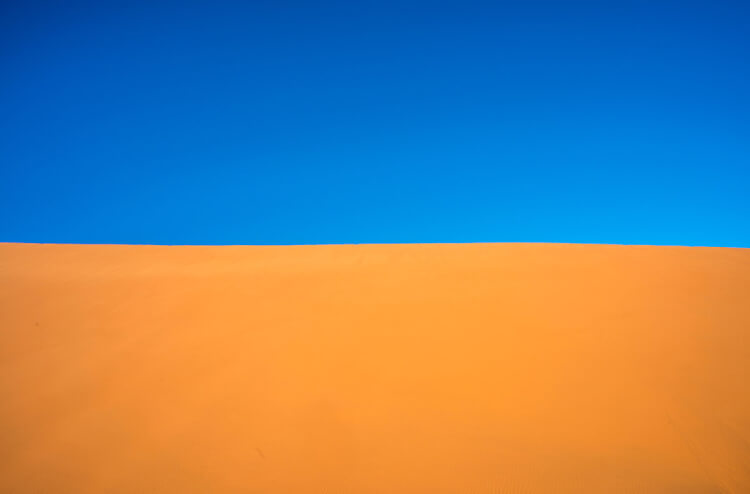
Try photographing top-down
Looking straight down often gives us the best chance of concentrating on one part of the scene while eliminating what is around it. Here too, we can do this from close-up, such as looking down on pebbles on the beach or vegetation on the forest floor, or from farther away by using a drone.
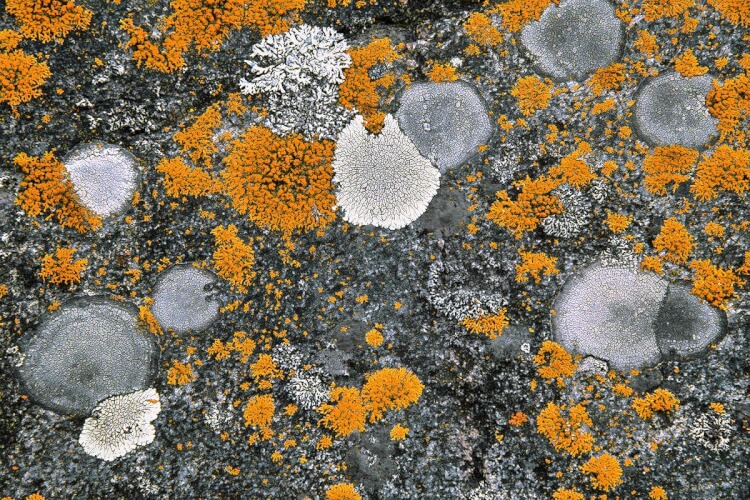

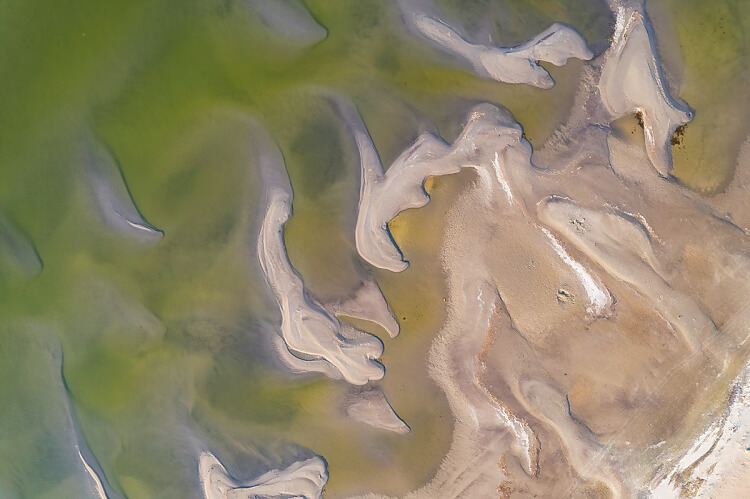
Look for shapes and forms
This is less about the subject but more about what it looks like. It could be snow drifts, ridges in sand dunes, shapes of rocks, repetitive patterns – you name it. The following shot is quite simple, essentially snow and water. It’s the interplay of shapes such as the snow-covered round rock and the curved edge of the snow against the water that gives it some interest.
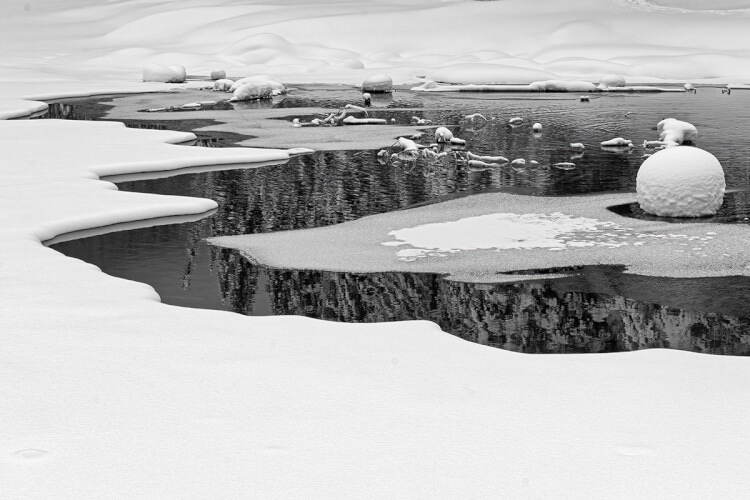

Play with focus, shutter speed, and camera movement
One of the biggest differences between conventional nature photography and abstract and impressionistic photography is the attitude towards focus and sharpness. Here we don’t have to be obsessed with getting a tack-sharp image. Indeed, ICM, or Intentional Camera Movement, has a big following among some photographers. Again, there are no rules. Play around with slow shutter speeds or even intentionally moving the camera during a shot to see what happens.

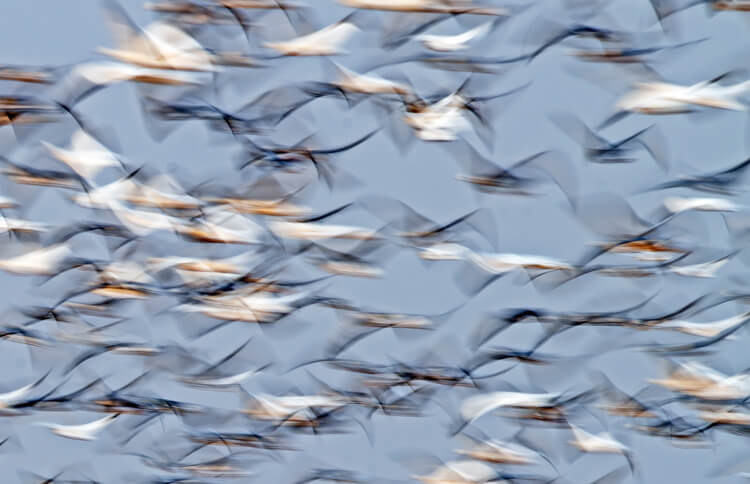
Above all, abstract photography is the place to experiment, let your imagination go wild, and have fun with new ideas and approaches.
Other articles on photography that you might enjoy on Photojourneys
- How shooting in RAW gives you better control over your photo content
- Using a telephoto lens for landscape photography
- Discover the benefits of using Auto ISO for wildlife photography
- Some tips to consider to improve your bird photography
SUBSCRIBE to Photojourneys below
Feel free to PIN this article on the How to Photograph Abstract Impressions of Nature
